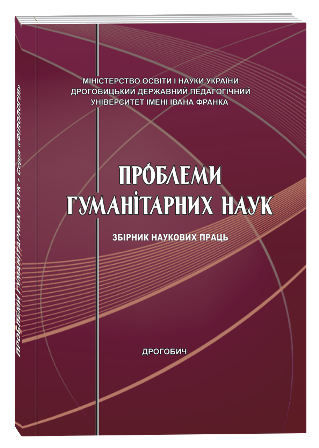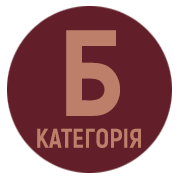CONNOTATIONS OF ANIMALISTIC SYMBOLISM IN UKRAINIAN NOVELLA AT THE EDGE OF 19TH-20TH CENTURIES
DOI:
https://doi.org/10.24919/2522-4565.2021.46.10Keywords:
Ukrainian literature at the edge of 19th-20th centuries, symbolism, novella, nature, character, animalistic imageAbstract
Dynamism, transiency and controversy as the main constants of the fin de siècle have influenced the character of self-identification by a writer within the mentioned literary period. The author of this article showed how the new levels of worldview – self-expression and modeling of the natural environment – substituted one-dimensional way to look at the literature as merely the depiction of external world. As a result, the archetypes of national culture were synthesized with original esthetical ideas outlined in modernistic European philosophy. It is at the edge of centuries when poeticization of the duality ‘human – nature’ as the stable constituent of Ukrainian literature triggered the symbolization of a recurrent detail and a folklore image, which, in the process, leveled up the new dilemma, ‘human – civilization.’ Research on the interpretation of animalistic symbolism in small prose works allowed not only revealing its new connotations unique for each writer, but also confirming the syncretic affinity of a human with a certain object of nature. The specifications of narrative structure in novellas by Olha Kobylyanska, Vasyl Stefanyk and Marko Cheremshyna analyzed in this article made possible to follow the formation of a story’s character, first of all within the natural surroundings, to display the subtlest movements of one’s soul, and to project the character’s past or future on the current event in one’s life, accompanied with communication with a living creature. The images and details of the novella, especially those animalistic, permit both the author and the recipient to ‘model’ the character’s world out of several capacious symbols together with numerous associations evoked by them. Due to the factors listed, the integrity of Ukrainian novellas have got the esthetic potential of a cosmogony myth, expressed in a character’s or a narrator’s dialogue with higher powers, natural elements and everyday realities, eventuating in their poeticization and personification.
References
Безпечний І. Теорія літератури. Київ : Смолоскип, 2009. 388 с.
Бігун О.М. Зооморфна метафорика в поезії Тараса Шевченка. Література. Фольклор. Проблеми поетики. Вип. 36. Київ : Вид-во Київського національного університету імені Тараса Шевченка, 2012. С. 23–30.
Кайдаш А.М., Хомич В.І. Фауністичні образи в прозі Миколи Вінграновського: лінгвостилістичний аспект. Література та культура Полісся. Серія «Філологічні науки». 2020. № 14. Ніжин, 2020. С. 241–247.
Кобилянська О.Ю. Вибрані твори / упоряд. Ф. Погребенник. Львів : Каменяр, 1982. 271 с.
Ковальов В. Виражальні засоби українського художнього мовлення. Херсон : Вид-во ХДУ, 1991. 113 с.
Костюк В., Денисенко В. Модерн як поле експерименту. Комічне, фрагмент, інтертекстуальність. Київ, 2002. 175 с.
Науменко Н.В. Образ макросвіту у мікросвіті художнього твору: символ у формозмістовому полі української новели кінця ХІХ – початку ХХ століття : монографія. Київ : Видавництво «Сталь», 2013. 356 с.
Попович М.В. Мировоззрение древних славян. Киев : Наукова думка, 1985. 184 с.
Сліпушко О.М. Давньоукраїнський бестіарій (звірослов): національний характер, суспільна мораль і духовність українців у тваринних архетипах, міфах, символах, емблемах. Київ : Дніпро, 2001. 140 с.
Стефаник В. Вибрані твори. Ужгород : Карпати, 1979. 192 с.
Троценко О.В. Тотемізм як можливий фактор формування архетипних форм ментальності. Гуманітарний часопис. 2007. № 2. С. 68–75.
Черемшина Марко. Карби : вибрані твори / упоряд. О. Засенко. Київ : Наукова думка, 1987. 448 с.
Шебештян Я.М. Сучасна українська літературно-художня зоонімія: функції, склад та структура : автореф. дис. … канд. філол. наук : 10.02.01. Ужгород, 2008. 22 с.
Hind Ch. Expressionism. New York : Random House, 2001. 167 p.



